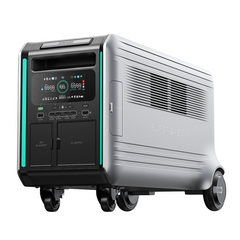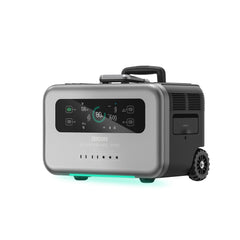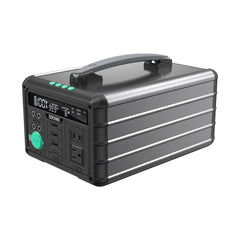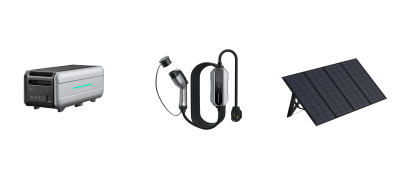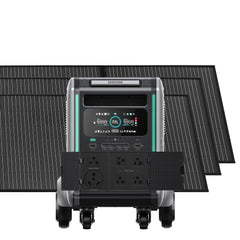How to Test Solar Panel: A Step-by-Step Guide
Harnessing solar energy through solar panels is an eco-friendly and cost-effective solution to meet our ever-increasing energy needs. To ensure optimal performance and efficiency, it is crucial to test solar panels effectively. This process involves assessing various aspects such as output voltage, current, temperature tolerance, and overall system integrity.
Performing regular tests not only detects potential issues but also helps identify improvement areas. From simple on-site inspections to more advanced electrical testing, understanding these procedures empowers us to make informed decisions about solar panel installations, maximizing their longevity and contribution to a sustainable energy future.

Why Should You Test Solar Panels?
Testing solar panels is essential for several crucial reasons. Firstly, it ensures their optimal performance and efficiency, guaranteeing maximum energy output. Regular tests help identify potential defects or malfunctions, enabling timely repairs and minimizing downtime. You can prevent safety hazards and system failures by assessing factors like voltage, current, and temperature tolerance.
Moreover, testing allows you to validate the manufacturer's claims and warranties, providing peace of mind and transparency in your investment. Ultimately, thorough testing helps maintain the panels' longevity and sustainability, supporting the transition to clean, renewable energy sources and contributing to a greener, more eco-friendly future.
Different Types of Tools For Testing Solar Panels and Their Functions
Testing solar panels requires various specialized tools to assess their performance, functionality, and safety. Here are some of the different types of tools commonly used for testing solar panels:
1. Multimeter
A versatile tool used to measure voltage, current, and resistance, essential for verifying the output of individual solar cells and panels.
2. Solar Cell Tester
Specifically designed to measure the electrical parameters of solar cells, including open-circuit voltage, short-circuit current, and maximum power point (MPP) voltage and current.
3. Pyranometer
Measures the solar irradiance received on the solar panel's surface, providing crucial data for evaluating panel efficiency and expected energy output.
4. Solar Simulator
Replicates sunlight to assess the panel's electrical performance under controlled conditions, enabling accurate and repeatable testing.
5. Infrared Camera
Identifies hotspots on solar panels caused by malfunctioning cells or poor connections, helping to prevent potential damage and inefficiencies.
Step-By-Step Guide on How to Test Solar Panel
1. Safety Precautions
Safety precautions are paramount when testing solar panels. Before starting the process, ensure the solar panel system is disconnected from any power source. This minimizes the risk of electrical shocks or accidents. Prioritize personal safety by wearing appropriate protective gear and avoiding working during adverse weather conditions to prevent slips or falls.
2. Visual Inspection
By carefully examining the panels' physical condition, you can identify visible damages, such as cracks, scratches, or accumulated debris. These issues can hinder the panel's efficiency and lead to potential malfunctions. Regular visual inspections enable early detection of problems, allowing for timely repairs or replacements, ensuring the panels operate at their optimum capacity and maintain longevity in harnessing clean, renewable energy.
3. Clean the Panels
Removing dirt, dust, and grime from the panel surface helps optimize their efficiency and energy output. A clean surface ensures more sunlight absorption, preventing potential performance losses. Regular cleaning, using a soft cloth and mild detergent if needed, ensures the panels operate at their peak capacity and contribute to the overall effectiveness of the solar energy system.
4. Measure Open-Circuit Voltage (Voc)
Measuring the Open-Circuit Voltage (Voc) is crucial in testing solar panels. It involves using a multimeter to determine the panel's voltage output when there is no external load connected. Voc represents the maximum voltage a solar panel can produce, and comparing it with the manufacturer's specifications ensures that the panel is operating within the expected parameters for optimal energy conversion.
5. Measure Short-Circuit Current (Isc)
This test temporarily bypasses the load and directly connects the positive and negative terminals. Using a multimeter, the current flowing through the circuit is measured. Isc provides valuable information about the panel's capacity to generate electricity under maximum exposure to sunlight, aiding in evaluating its performance and efficiency.
6. Curve Tracing
Curve tracing, specifically using an IV curve tracer, is critical in testing solar panels. It helps plot the current-voltage characteristics of the panel, revealing its maximum power point (MPP). By understanding the MPP, users can optimize the system for peak efficiency, detect shading issues, or assess cell degradation. This valuable data aids in making informed decisions about panel performance and ensuring the overall effectiveness of the solar energy system.
7. Analyze Results
It is essential to compare the test outcomes with manufacturer specifications and industry standards. Identify any deviations or inefficiencies in the solar panel's performance. This analysis will help you make informed decisions, such as repairing or replacing faulty panels, optimizing the system configuration, or implementing maintenance strategies to enhance the overall efficiency and productivity of the solar energy system.
8. Take Action
Based on the test results, the action involves promptly addressing any identified issues. This may include repairing or replacing faulty solar panels, optimizing system configuration for better efficiency, or improving maintenance practices. Proactive action ensures the solar panel system operates optimally, maximizing energy output and prolonging the system's lifespan, thereby ensuring a sustainable and reliable renewable energy source.
Common Issues That Can Be Identified Through Testing and How to Address Them
Several common issues with solar panels can be identified through testing, allowing timely interventions to optimize their performance and longevity. Some of these issues include:
1. Reduced Efficiency
Low power output due to soiling, shading, or aging cells can be detected through IV curve tracing, pyranometer readings, and data logging. Cleaning the panels, removing obstructions, or replacing damaged cells can address these concerns.
2. Hotspots
Infrared inspections can reveal hotspots caused by faulty cells or poor connections. Replacing or repairing the affected components can prevent further damage and ensure safe operation.
3. Electrical Defects
Testing the open-circuit voltage (Voc) and short-circuit current (Isc) using a multimeter can identify electrical faults like loose connections or damaged junction boxes, which can be fixed by re-terminating or replacing faulty components.
4. Degraded Cells
IV curve tracing can show decreased current output in certain cells, indicating cell degradation. Replacing the degraded cells or the entire panel can restore performance if feasible.
5. Dust and Dirt Accumulation
Regular cleaning of the panel surface can resolve reduced efficiency caused by dust and dirt accumulation.
Addressing these issues promptly through regular testing and maintenance ensures the solar panel system operates optimally, maximizing energy generation and extending the system's lifespan. Routine inspections and data analysis are vital to maintaining a reliable and efficient renewable energy source, contributing to a sustainable and greener future.
Tips for Testing Solar Panels Safely
1. Disconnect From the Power Source
Disconnecting the solar panels from the power source is a crucial safety measure to prevent electrical accidents during testing. This ensures that no electricity is flowing through the system, reducing the risk of electrical shock or injury to the individuals conducting the tests. Always prioritize safety by isolating the panels from the power grid before starting any inspection or maintenance procedures.
2. Wear Appropriate Personal Protective Equipment
When testing solar panels, wearing appropriate personal protective equipment (PPE) is crucial to ensure safety. PPE may include gloves, safety glasses, and non-conductive footwear. It shields the tester from potential electrical hazards, burns, and injuries while handling the panels and associated equipment, minimizing the risk of accidents during testing.
3. Avoid Contact With Live Electrical Components
Use insulated tools and maintain a safe distance to prevent electrical shock or injury. Turning off the system and disconnecting from the power source before testing is essential to ensure a safe working environment.
4. Use Insulated Tools for Testing
Insulation on the tools ensures protection against accidental contact with live circuits, reducing the risk of electric shock. Always select properly rated and certified insulated tools for specific testing tasks to ensure a safe and secure testing environment.
Final Thoughts
Testing solar panels is critical to ensure their optimal performance and efficiency. By following a step-by-step approach, conducting visual inspections, using specialized tools, and addressing identified issues promptly, we can maximize energy output and longevity. Emphasizing safety measures and routine maintenance allows us to harness the full potential of solar energy, contributing to a sustainable and eco-friendly future.
